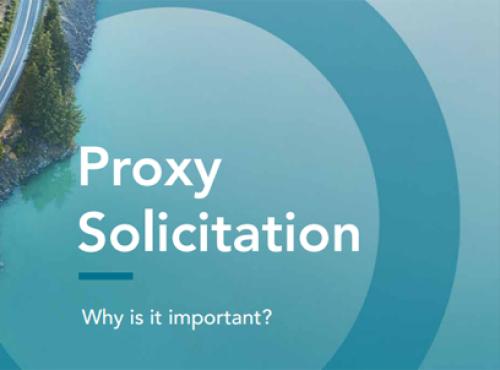A number of companies are trying to reinvent the research model
The sell side is broken! That refrain, regularly repeated for more than a decade, is usually accompanied by a consensus list of probable culprits: decimalization, shrinking commissions and structural biases creating conflicts of interest. But conversations about how – or whether – to fix the sell side usually lack specificity, unless you’re talking to someone who is actually doing something about it.
From a perspective of 27 years in the industry, Tom Cullum believes that the sell side needs ‘to restore the balance [of] servicing both the investment client and the corporate client.’ Cullum, CEO and founding partner of Lake Street Capital, last year joined four other veterans from Craig-Hallum Capital Group and Piper Jaffrey to build a vertically integrated boutique investment bank.
Minneapolis-based Lake Street focuses on smaller growth companies either introducing disruptive technologies or leveraging macro sector change. Clean technologies, intellectual property licensing, network infrastructure, online advertising and new energy companies all fall within its research focus.
Cullum believes the large sell-side firms destroyed their own value to clients. ‘That whole grow-at-any-cost approach makes firms unfocused,’ he observes. Large bulge-bracket firms are lying on ‘a bed of nails, with too many touch points, too many sectors, too many generalists.’ He feels many buy-side firms relegate traditional research to ‘channel checks’ augmenting their own expanded internal research capability. ‘I don’t know how much real alpha large institutions look for from sell-side research,’ he adds.
What’s more, Cullum always welcomes approaches from companies seeking additional coverage. ‘It doesn’t benefit anybody if we’re 30th on a stock, but it does if we can be number four or five,’ he explains.
While Lake Street is among the newest boutiques built on a focused research franchise, the emerging sell-side business model continues to find other ways to make money. For example, Dowling & Partners, a Connecticut-based research boutique focused on the insurance industry, has leveraged its research expertise into an additional revenue line, publishing a weekly subscription-only newsletter and statistical summary that is a must-read for insurance companies.
Then there are firms like Edison Investment Research, with 60 analysts writing sponsored research on hundreds of companies across the globe at a fixed yearly fee of $45,000, one of a handful offering this type of service. Peter Molloy, one of Edison’s founding directors, argues that sponsored research may well be the future of the sell side, in an issuer-funded model similar to that of fixed-income rating agencies, which went unchallenged until the collateralized debt obligation debacle.
The sponsored research is available free on Edison’s website. There are no buy or sell ratings, but analysts do provide earnings estimates, models and a discounted cash flow valuation. And it’s not just small-cap and underfollowed companies that use sponsored research: Rolls-Royce recently collaborated with Edison to reach a broader audience than it was reaching through traditional sell-side methods. In addition, Edison provides a research product for institutional investors, available only to institutional clients, produced by a separate team, sometimes in collaboration with the sponsored research analysts.
Molloy argues that sponsored research has been given a bad rap, particularly in the US. ‘Our predecessors tended to be small shops focused on micro-caps, writing promotional research,’ he says. The small fee Edison receives from any individual client is not enough to create a conflict, he maintains, because no one client is worth ‘our reputation and credibility’.
Edison has also built other revenue lines, all based on its research platforms: corporate access programs can be paid for either by institutional clients or issuers, commercial due diligence serves corporate clients as part of M&A research or private equity investors, and the firm is in the process of launching an ADR research platform in the US to service issuers and institutions currently laboring in a research-thin sector. So while the sell side may be broken, there is evidence it is also on the mend.










